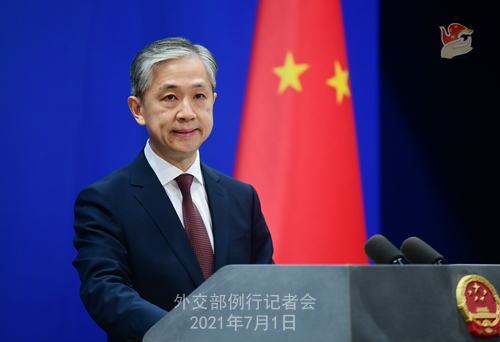7th November, 2023 AFP: An estimated 80 percent of China’s loans to Belt and Road partners went to countries in financial distress, said a report released Monday by a US-based research institute. What’s the foreign ministry’s comment on the findings of this report?
Wang Wenbin: I have not seen the relevant report you mentioned, but as I understand, your question points to the perspective long shared by some Western media that “China creates debt traps for developing countries”. Let me elaborate on our response to this perspective.
“China-made debt-traps” are nothing but a narrative trap created by some forces to disrupt and jeopardize China’s cooperation with other developing countries.
First of all, this “debt trap” rhetoric goes against economic common sense. As we all know, a healthy, right amount of debt is conducive to socioeconomic development. Many countries take government debt as an important form of raising funds and lever for economic development. Anyone who talks about only the negatives of debt without mentioning its benefits or even portrays it as a poison for development is simply being ill-informed or amateurish.
This “debt trap” rhetoric also runs counter to facts. China’s investment and financing cooperation with other countries focuses on infrastructure and production sectors and has successfully helped developing countries address lack of funding, infrastructure and talents and other development bottlenecks and enhance their self-driven development capacity. A report by the US-based Boston University Global Development Policy Center noted that the investment and financing cooperation between China and fellow developing countries could help these countries to overcome bottlenecks in development, unlock growth potential and increase global real income by up to three percentage points. To describe development resources as a “debt trap” is to call white black.
This “debt trap” rhetoric wrongly pictures the will of the developing countries. Investment and financing cooperation between China and fellow developing countries is carried out in compliance with international rules, market laws and the principle of debt sustainability. Widely welcomed in the developing world, it offers a good choice for debt-laden countries to meet funding shortfalls and boost economic growth. Leaders of developing countries have noted that China shows up where and when the West will not or are reluctant to and is a true good friend. In fact, as we have seen, not a single cooperation partner has accused China of creating “debt traps”. It is a handful of Western countries who have been spreading the fallacy of “Chinese debt traps”.
The multilateral financial institutions and commercial creditors these countries dominate are the major creditors of developing countries and constitute the major source of stress for them in terms of debt repayment. They are the ones that need to make substantive contributions to easing developing countries’ debt burden.
















